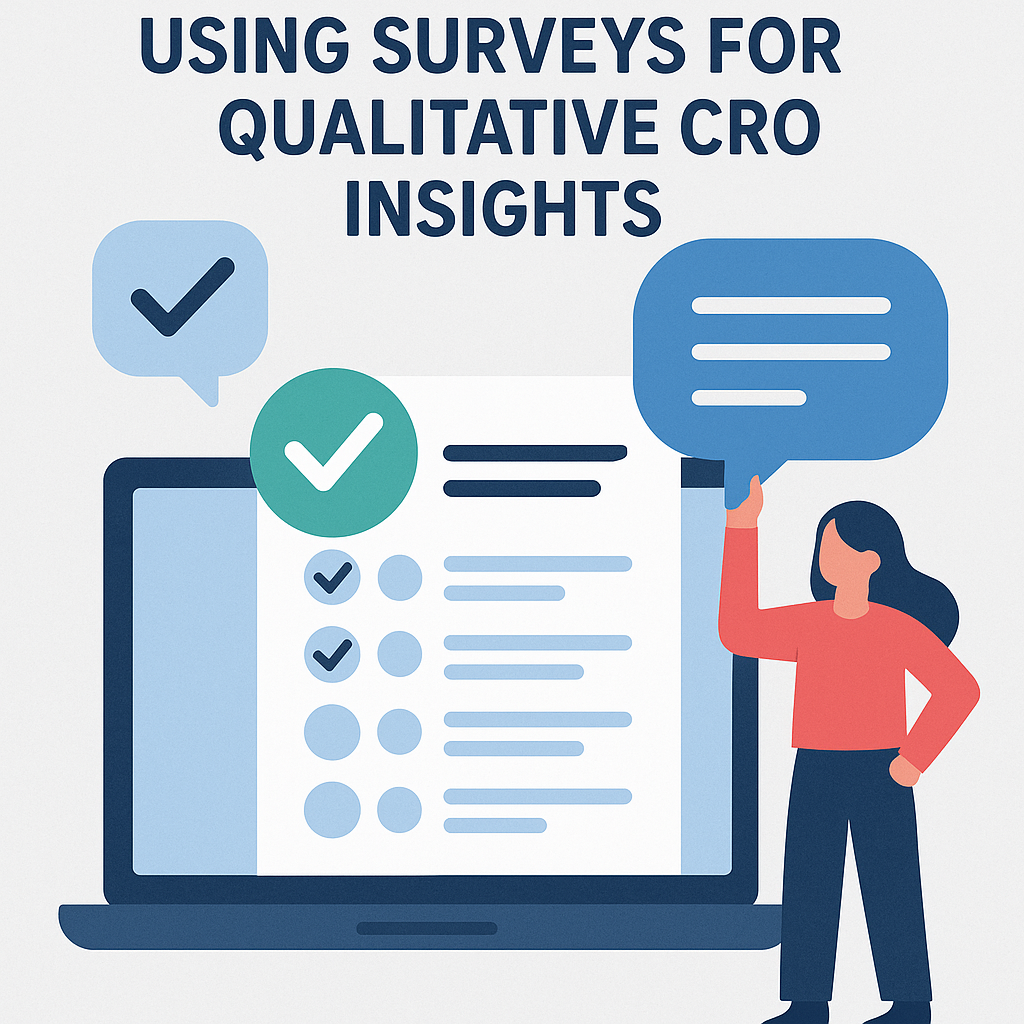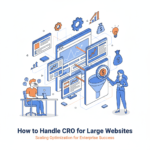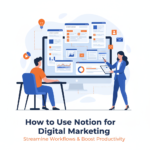
Using Surveys for Qualitative CRO Insights
Conversion Rate Optimization (CRO) often focuses on quantitative data—clicks, scrolls, bounce rates. But to truly understand why users behave the way they do, you need qualitative insights—and surveys are one of the most powerful tools to get them.
Table of Contents
-
Introduction: Why Qualitative CRO Matters
-
What Are Surveys in CRO?
-
Benefits of Surveys for Conversion Optimization
-
Types of Surveys for CRO
-
Key Survey Questions to Ask
-
Where and When to Trigger Surveys
-
Tools to Use
-
Best Practices
-
Mistakes to Avoid
-
Conclusion
1. Introduction: Why Qualitative CRO Matters
Quantitative data tells you what happened.
Qualitative data tells you why it happened.
Surveys can help you uncover:
-
What’s stopping users from converting
-
What features or copy they find confusing
-
How they describe their problems (great for messaging)
-
Emotional drivers behind decisions
When you understand your users’ motivations and hesitations, you can make smarter design, copy, and UX decisions.
2. What Are Surveys in CRO?
Surveys in the CRO context are structured questions posed to users at strategic points in the funnel to gather feedback.
They may appear as:
-
On-site pop-ups
-
Exit-intent modals
-
Post-purchase questionnaires
-
Email follow-up forms
3. Benefits of Surveys for Conversion Optimization
✅ Uncover User Friction
Find out what’s confusing or annoying users before they bounce.
✅ Language Discovery
Learn how your users talk about your product—use this in your copy.
✅ Identify Barriers to Conversion
Understand objections, missing information, or technical issues.
✅ Prioritize CRO Tests
Get direct feedback to shape high-impact A/B test ideas.
✅ Improve Customer Segmentation
Learn who’s buying, who’s not, and why.
4. Types of Surveys for CRO
🔹 1. On-Page/On-Site Surveys
-
Triggered based on scroll depth, time on page, or exit intent.
-
Best for understanding hesitations and UX issues.
Example question:
“Is there anything preventing you from completing your purchase today?”
🔹 2. Post-Purchase Surveys
-
Sent to users after a successful conversion.
-
Helps understand what worked.
Example question:
“What convinced you to buy from us today?”
🔹 3. Abandonment Surveys
-
Target users who started but didn’t finish checkout.
Example question:
“What stopped you from completing your purchase?”
🔹 4. Email/CRM Surveys
-
Ideal for longer, more detailed feedback.
-
Good for product-market fit, buyer personas, and loyalty insights.
🔹 5. User Intent Surveys
-
Ask new users about their goals.
Example question:
“What are you hoping to accomplish on this page today?”
5. Key Survey Questions to Ask
Tailor your survey to the funnel stage.
🛒 For non-converting users:
-
“What’s stopping you from [desired action]?”
-
“Was anything unclear or confusing?”
-
“What information were you hoping to find?”
✅ For converting users:
-
“What made you choose us today?”
-
“What nearly stopped you from buying?”
-
“How would you describe our product to a friend?”
🌱 For general users:
-
“What’s the biggest challenge you’re trying to solve?”
-
“What do you think we could improve on this page?”
6. Where and When to Trigger Surveys
🗺 High-impact locations:
-
Product pages
-
Checkout/Cart pages
-
Blog posts with high bounce rates
-
Pricing pages
⏰ Trigger based on:
-
Time on page (e.g., after 30 seconds)
-
Scroll depth (e.g., 70% down the page)
-
Exit intent (before user leaves the tab)
-
Post-purchase confirmation
7. Tools to Use for Surveying
| Tool | Best For |
|---|---|
| Hotjar | On-site feedback widgets |
| Qualaroo | Contextual surveys & targeting |
| Typeform | Beautiful full-page surveys |
| SurveyMonkey | Advanced logic & analysis |
| Google Forms | Free and simple form setup |
| Intercom | Embedded surveys via chat |
| HubSpot | CRM-integrated survey campaigns |
8. Best Practices
✅ Keep it short – 2–4 questions max
✅ Be conversational – Use simple, clear language
✅ Use open-ended questions – Let users speak freely
✅ Offer an incentive – Gift cards, discounts, etc., for longer surveys
✅ Tag and analyze responses – Look for recurring patterns
✅ Use feedback loops – Let survey results shape future testing
9. Mistakes to Avoid
🚫 Asking leading questions
🚫 Using jargon the user doesn’t understand
🚫 Triggering too early (before they’ve had time to explore)
🚫 Ignoring the data you collect
🚫 Only asking yes/no questions
🚫 Not segmenting feedback (returning users vs. new users)
10. Conclusion
Surveys are an underrated goldmine for CRO. They help you understand the real thoughts, fears, and motivations of your users—which analytics tools alone can’t reveal.
With the right questions in the right place at the right time, surveys give you qualitative fuel to:
-
Remove conversion blockers
-
Craft better messaging
-
Build smarter A/B tests
-
Grow your revenue
Author



